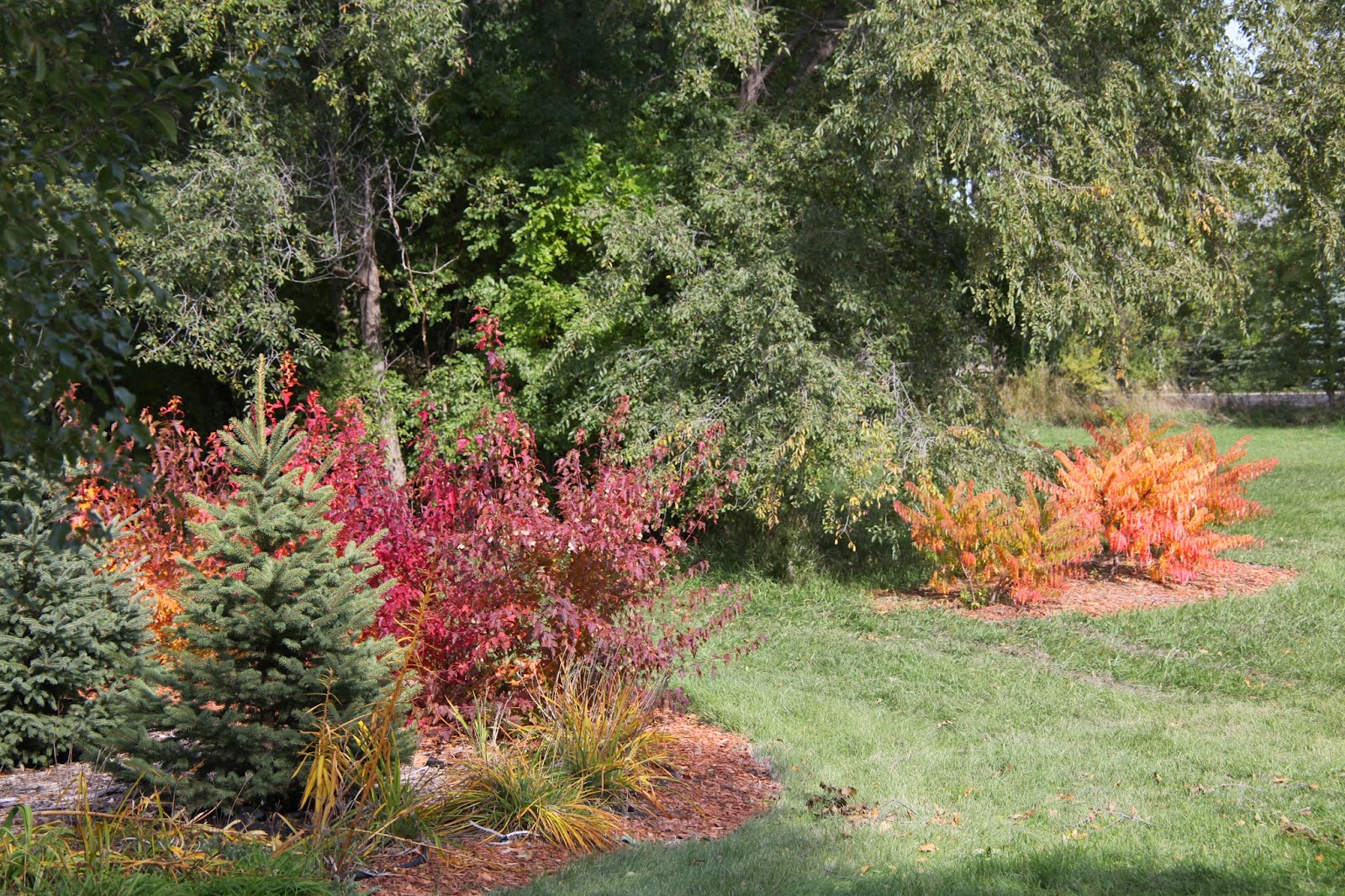 |
| Autumn at Wiese Acres |
Last year, we had our first snow storm on October 4. This year, it is October 25 and we are outside in our short sleeves. High temperatures during the day have been in the 70's and even up into the 80's. That's good for us. Unfortunately, it can be pretty stressful for the trees, shrubs, and perennials, especially when those warm temperatures are accompanied by low humidity and no rain.
Any non-dormant plants, especially trees and shrubs, should be kept well watered going into winter. Usually, cooler October temperatures mean that if you gave them a good soaking, either with rain or irrigation in mid to late September, they will be ok for the winter. Not this year, though. They will need additional water until they are fully dormant, or air and soil temperatures are below 40 degrees. Watering should be done early enough in the day so that it has time to soak in thoroughly before temperatures drop below freezing at night.
Newly planted trees are most susceptible to winter drought injury. Trees can take several years of growth to establish a good, deep root system. The larger the tree when it is transplanted, generally the longer it takes to become well established. A general rule of thumb is one year per inch of trunk diameter. Most shrubs and perennials can be considered well established after one full year of growth.
It is especially important to assure that evergreen trees and shrubs are very well hydrated going into winter. They are very prone to dehydration in the harsh, drying winds of winter. The more moisture in the needles going into winter, the better they do.
A good thorough watering for trees means that water is allowed to soak into the soil slowly to a depth of about 12 inches. When watering trees, water should be applied throughout the drip line area of the tree, that is, wherever the tree casts a shadow when the sun is directly overheard. The larger the tree, the more water will be required. A good guideline is to apply ten gallons of water for every inch of trunk diameter, so if your tree's trunk is 3 inches around at a level approximately six inches above the ground, it will need 30 gallons of water at each watering.
Newly planted shrubs should be given 5 gallons of water twice a month until the ground freezes. Small established shrubs, those 3 feet tall or smaller, need 5 gallons of water monthly. Larger established shrubs should be given about 20 gallons on a monthly basis. Shrubs should also be water within the dripline of the shrub and around the base of the shrub.
Herbaceous perennials usually are well established by the end of a growing season. Bare root plants take longer to establish than container plants and late fall transplants take longer to establish than spring plantings. Fall planted perennials, bare root plants, and perennials located in windy or southwest exposures should receive one-half to one inch of water whenever the first one to two inches of soil feels dry, until the ground freezes.
And, finally, the lawn grass is still green and growing. Lawn grass needs continued watering until it goes dormant for the winter. Grass should also be cut a bit shorter for its last cutting of the season to keep the longer blades from being matted by the heavy snows of winter, which can cause diseases and mold.
Sooner or later, cold and snow will arrive. For now, though, it's pretty wonderful to walk outside and enjoy greenery and warm sun, even if it does mean a little more garden work for the season.



















